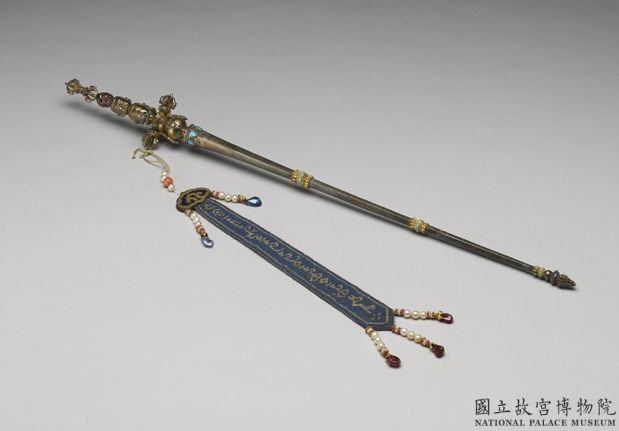Khatvanga, made in Tibet, Qing dynasty (1644-1911)
- Image Number: K1D001969N000000000PAB
- Dynasty: Qing dynasty
- Category: Miscellaneous objects
- Function: Magic instrument
- Material: Mineral/metal/silver gold-plated
- Description:
Kazhangga, also known as Heavenly Staff, originated from the walking stick of early Tantric Yogis in India. It is marked by the skull of the Brahman with a wooden stick inserted in it. Later, it evolved into one of the holding objects of Princess Ming, Goddess or Avatar, symbolizing the ultimate state of bodhicitta, and the perfect combination of great joy and emptiness. Kazhanga has a complex structure. It connects the staff body and the staff handle with a cross Vajra pestle and a treasure vase, and ends with a sharp pestle. The handle is made of three heads: a bloody head, a rotten head, and a dried up skull, representing the elimination of the three poisons of greed, anger, and delusion. At the top is a vajra pestle, representing the sixth wisdom. The cross vajra pestle represents the four major clean colors, four karma, four immeasures and four liberation doors. The vase symbolizes perfect nectar and represents the completion of great wisdom. This Kazhangga is silver plated with gold. The staff is decorated with turquoise hoop, with gold ribbon, pearl, coral twist, red and sapphire

Pictures & Images [HD] download
© Copyright
The copyright of the article belongs to the author, please keep the original link for reprinting.
THE END





![[Qing Dynasty] British female painter—Elizabeth Keith, using woodblock prints to record China from the late Qing Dynasty to the early Republic of China—1915-China Archive](https://chinaarchive.net/wp-content/uploads/2022/11/image-191x300.png)